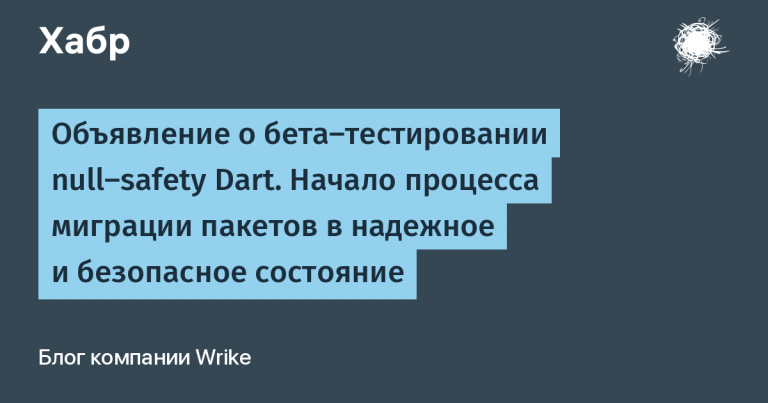Parsing the backlog. Part 1. DiRT Rally
In recent years, I have become less and less interested in “new” games, not least due to the fact that almost nothing subjectively significant comes out, just as there have been no global technological breakthroughs in the last ten years. This state of affairs prompted us to look back to the past to a greater extent, and in it, among other things, a sufficient list of what can be called a “game backlog” has accumulated. This, in turn, led to the idea of writing a series of experimental articles/discussions, the first part of which I would like to dedicate to Dirt Rally (2016).
From rags to riches, back and vice versa
Late nineties. Rally games are gradually starting to move away from the concept of “like an arcade race with a rally twist.” In those years, entire series and individual iconic projects appeared, be it V-Rally (1999) or Mobil 1 Rally Championship (1999), which can still be found in different tops against the backdrop of modern games of the genre. In 1998, a series began its journey that would finally form the bar for the “near-hardcore” rally simulator – Colin McRae Rally (1998). And if the release of the first part can simply be called successful, then with the advent of Colin McRae Rally 2.0 CMR will forever leave its mark on gaming history. The name Colin McRae will probably mean little to those not familiar with rallying as such, but I will note that one detail is worth mentioning here – not least of all, he was remembered by the public for his “hooligan” driving style. This aspect to some extent migrated into the game adaptation. The principle “the end justifies the means” works here to its fullest – you can smash your car into pieces, but, balancing on this edge, achieve the desired result at the finish line.
Years will pass, many rally simulators will be forgotten, entire series will sink into oblivion, and by 2023, essentially, there will be only one left, under the auspices of EA – but this aspect will not go away. If another component changes, the cost of an error will increase many times over.
Years will pass, many rally simulators will be forgotten, entire series will sink into oblivion, and by 2023, essentially, there will be only one left, under the auspices of EA – but this aspect will not go away. If another component changes, the cost of an error will increase many times over.
Rally hardcore


For several years, gradually turning into rather controversial attempts to link into one arcade racing, rally, simulator and gymkhana, whose name is the DiRT series (the only exception here, perhaps, is the first part, released in 2007), in 2016 Codemasters released DiRT Rally. A rally simulator that is radically different not only from its predecessors in another branch of development, but also from any other rally racing in principle, including classic ones, the game is not without reason given the title “Dark Souls from the world of rallying.” A high barrier to entry, the most severe time frame, unforgiveness of any, sometimes the smallest mistakes, coupled with a detailed damage system, placed this game apart from all other brothers in the genre. Career mode has also undergone major changes. Now the player is engaged not so much in sequential passage of one track after another, but in gradual advancement in the level of difficulty, starting from open championships and ending with the master level. There are five stages in total, but opponents will not give in at the very first stage. At the same time, the differences between the “open” championship and the “elite” are, by and large, not particularly noticeable; the real difference is most likely only between the last two levels, especially when it comes to the hill climbing mode, where I ultimately did not manage to rise above the fifth- sixth place in the masters tournament. Thus, starting, most likely, with results no higher than the middle of the list, you will have to cope with the presented “entry threshold”. Someone may despair and abandon the process at the start, but if they manage to control themselves and the game as a whole, then the subsequent perception will be different. As for me, among other things, I had previously gained a similar experience to some extent when I played the platformer Cuphead (2017), which at first also turned out to be completely overwhelming on the “normal” difficulty level.
3.5×6
The game has four modes. Classic rally races from point A to point B, high-speed hill climbs, a mode unique to Dirt Rally, as well as circuit races with the number of competitors from three to six. Upon achieving a certain progress, the world championship in circuit racing opens, which, in fact, is no different from ordinary races of this kind. Rally. There is no particular variety of tracks and locations. Let me start by saying that only six countries are represented. You can ride along narrow and rocky serpentines in Greece. Similar to the autobahns in Monaco, which also lie somewhere in the mountains, but are smoother in the context of ease of cornering, due to which the cost of an error for high speed becomes lower. Full of muddy potholes and dangerous parts of the UK; Wales is represented here specifically. On the generally straight lines of Finland, Germany and Sweden, which are sometimes diluted with sharp hairpins, but otherwise do not offer any special surprises against the backdrop of the mentioned locations. According to available data, all spaces have real prototypes, but how accurate the correspondence is is an open question (https://steamcommunity.com/sharedfiles/filedetails/?id=470160373).
Another aspect of the lack of variability is the fact of how the races are generally structured. There is a certain formal variety of routes, but in fact we can say that only one is conditionally allocated for one country – and if you have seen one, then you have seen them all. Tracks are provided in section format. Thus, depending on their number, the arrival will be either longer or shorter. Conventionally – four kilometers or ten. Part of the track or the entire track. Also, if in the open championship the tracks will be shorter on average, and there will be four races in one country, then closer to the last levels their number will increase to twelve per country – and, as a result, only one race from the series will take a decent amount of time.



The mentioned approach, with some adjustments, is equally applicable to other modes – for example, hill climbing is in fact limited to exactly one track, and circuit racing – to three. Not much can be said about these two modes themselves. The first one gets boring quite quickly, although it has beautiful views; the second is notable mainly for the fact that in each race there is an additional fragment of the track that must be completed on one or another lap. Thus, you have to look for a strategy regarding when it is best to pass it, so as not to give up position to your opponents. In most cases, as practice has shown, it is best to do this on the first lap: there will be time to “catch up and overtake”; if we are talking about the master level and six opponents, and also if there are more than three circles, then on the third to sixth. Team management is provided, which is of a rather nominal nature here, so I will not dwell on it in detail, I will note only one important aspect – the higher the skill numbers of individual participants, the better. The more complete the team is, the faster it will service a specific car. In addition, as the kilometers traveled accumulate, upgrades will be unlocked for a particular car – one of the reasons why there is no point in choosing more than one from a certain class. More upgrades mean a more controllable and faster car at the end. In later stages, these aspects can influence whether you can achieve a better final time than your opponents or not. There is generally a typical rally vehicle fleet, the main feature of which is the time coverage – you can take a slow and clumsy car from the 1960s, or you can take a “powerful monster” from the 2000s. There is multiplayer, quite active and at the time of writing, a damage system typical of the genre. There is basically nothing to say about the graphics – a nice picture, detailed cars, but still a low-poly audience.
I rejected those answers. I chose the impossible… I chose a keyboard.
Both now, having more than 10 years of driving experience with a category “B” license, and previously, I have never been a big fan of using game steering wheels. Only once, somewhere in the second half of the 2000s, did I have the chance to try out Logitech Formula EX, with which, among other things, I managed to take part in the Need for Speed: ProStreet championship (2007) with cash prizes, which was held at that time by one of the e-sports portals. Its peculiarity was that not only professionals, but also amateurs could apply, which is what I did. The process, oddly enough, started well, I managed to get around a couple of competitors, but when it came to competing against a real eSports player, I dropped out, lagging behind my opponent, who covered every centimeter of the track with perfect balance, by about a lap. By the way, to the context of real experience. A couple of frames came to mind. Passing the license. It's an icy January, it's -30 outside. Auto – Lada Samara with a manual gearbox and an extremely tight steering wheel. About two minutes to pass the “platform” in the stage of perfected automatism (who said that learning timings is only about games?) – not to hit the cones when parking the car backwards, not to get stuck on the icy hill, which you first had to drive up, then turn off the car by putting the handbrake on, then start it and move on, etc. After that, within 10 minutes of driving around the city, no more than three minor mistakes. But back to the point. Due to the mentioned circumstance with the steering wheel, and also due to the fact that most of the time I played mainly arcade races, and, by the way, there are not so many others left at the moment, the main controller was the gamepad. I also started my acquaintance with him in the case of DiRT Rally in 2016, before the game was shelved. I decided to return to the already hardcore rally car simulator, complicating the task even more and choosing the keyboard.

This may seem strange to some, but having played a total of about 200 hours, having reached the master level in all championships, as well as knocking out 166 achievements and 170 available ones, I can note that, despite the significant entry threshold, the game is quite adapted for such a scenario. Moreover, if you read a number of forum threads, you can note the following fact – keyboard owners often find themselves on the leaderboards in terms of time obtained on a particular track; I was no exception here, having once bypassed all my rivals in hill climb mode.


The hardest races for me were the race cars of the 1960s and 1970s. The first – due to their extreme sluggishness and general slowness. As a result, when passing races in a similar car, in the “open” championship it was possible to achieve success only by balancing in the positions of the tournament, coming first or second – with an equal amount of points, the victory is ultimately given to the player. Thus, by the way, I managed to complete more than one tournament, but I was not able to reach the master level in any of the modes. As for the 1970s, another component came into force here – if in the case of other classes it was possible to choose an all-wheel drive or front-wheel drive car, here there is no such choice; in any case, you will have to get behind the wheel of a rear-wheel drive car and look for a gas / brake balance. Otherwise, the result will be disastrous: if you overdo it a little with acceleration, the car either dashes into a ditch (and this is equivalent to the option of +15 seconds to the total race time, as a result – a virtually guaranteed failure), or completely crashes. In a different scenario, regular 180-degree turns also promise. But, despite everything that has been said, in the end I still managed to find some balance here. Another element of the entry barrier was the tracks themselves. Without actually memorizing some of their features, it is virtually impossible to complete them in the required time. This was not the case either in Colin McRae Rally 2.0 / 4.0, or in the first DiRT, or in a number of other genre games. But, even having studied them sufficiently, somewhere, despite all the skill, it was still not possible to cope with the opponents – then the mathematical calculation began again, so to speak – estimating in which locations it would be easier to be guaranteed to arrive first, and in which not. In my case, the situation, as a rule, was easier in Germany, Finland and Monaco and more difficult in Greece, Sweden and England.
As for the other modes, I probably won’t single out anything special here. In circuit racing, by default the least interesting mode, the previously mentioned passage of an additional fragment played a key role, and everything else faded into the background. Climbing a hill is identical in paradigm to rallying – the only difference is that the timing here is even stricter: sometimes the count literally goes down to a split second.
BMW, Mitsubishi, Citroën.

1980s, 2000s, 2010s. I did not fine-tune the car and actually drove most of the time with those that are offered by default. Some people like to tinker with one for hours and conduct test runs, but I don’t belong to this category – I sat down and went. I also did not pay special attention to which car to choose – the choice, in fact, was made purely for visual and aesthetic reasons. Later, after playing a bit in multiplayer, I noticed a certain difference in the controls and driving characteristics, but for me – beyond the division into time periods – these aspects were generally secondary. The only exception, perhaps, was time trials, where the goal is to beat the average time, which is the subject of many achievements on Steam – here the choice fell on the brands from the title. Most of the races were successful from the first run, the gap was quite noticeable, sometimes more than a minute, but there were also situations where the final difference was several seconds. In multiplayer, with the exception of the already mentioned hill climb, the situation turned out to be different – we were never able to rise above the middle of the middle segment.
Go ahead, punk, make my day

To summarize, I would like to say that DiRT Rally is “a thing in itself.” It is not at all friendly to beginners and greets regulars of the genre rather coldly, without offering much variety – compared, in particular, to its competitor in the WRC series. However, having overcome the initial difficulties, which are not the weakest and most fleeting in nature, you can discover a rather unique rally simulator, which, perhaps, has no analogues and will never again exist – DiRT Rally 2.0, judging by the reviews, took the physical model from the main DiRT series, while other elements remained approximately the same, and the planned collective work of several studios in the form of WRC (2023) is extremely unlikely to decide to perform in the same field.




